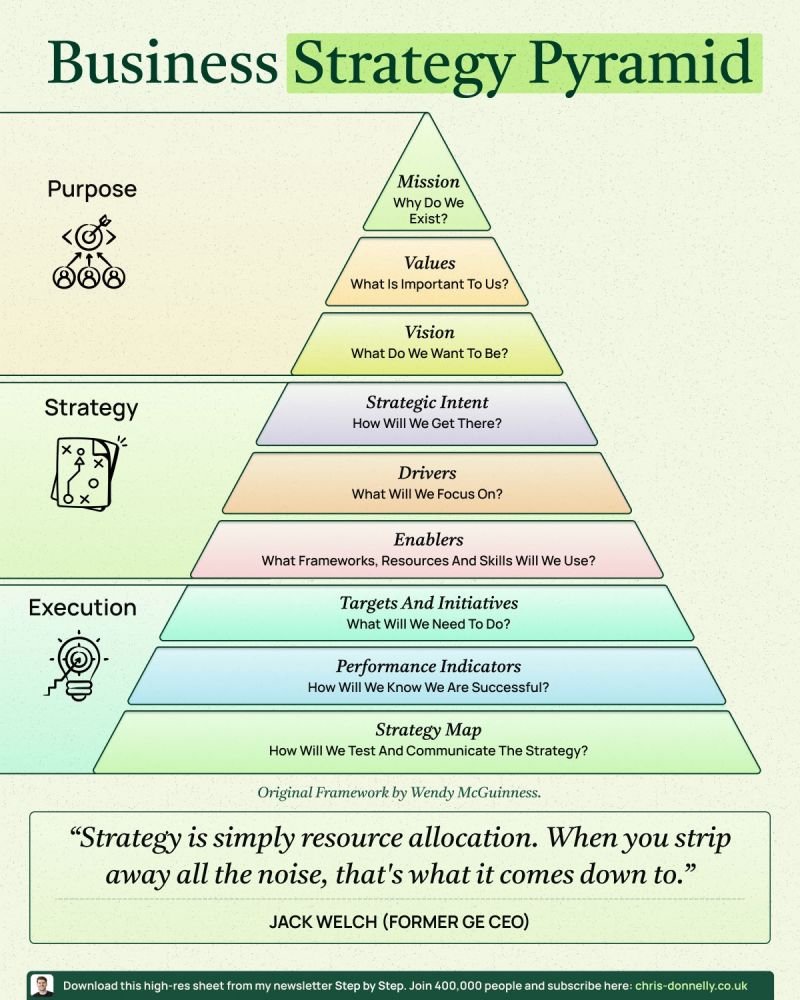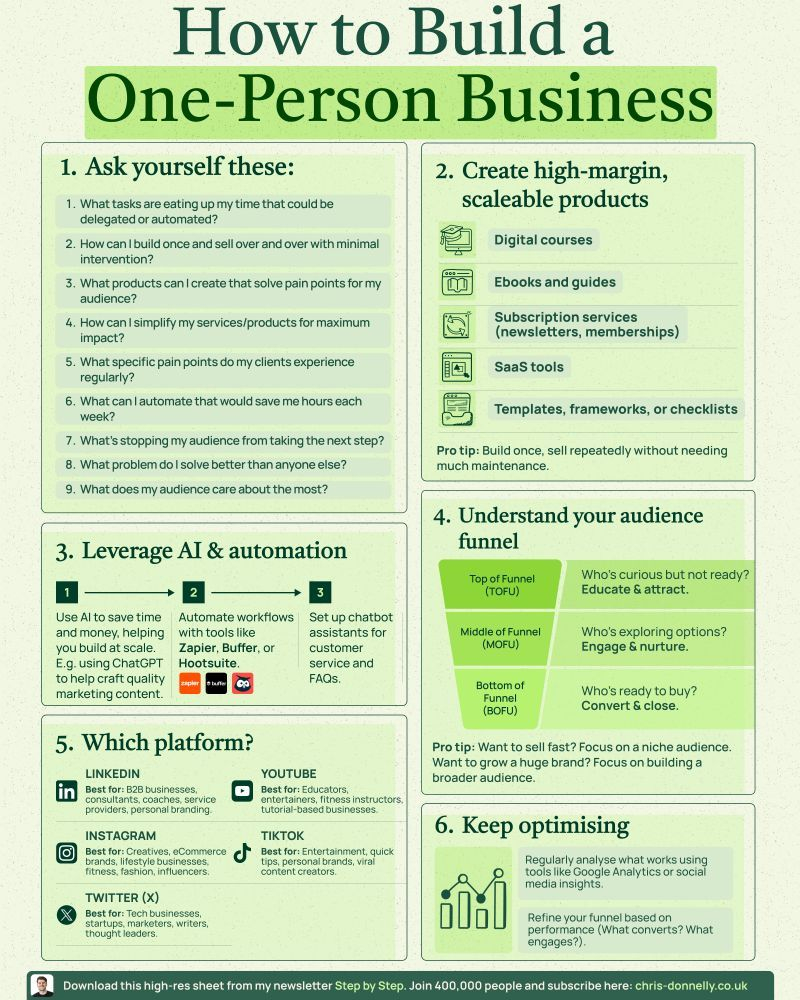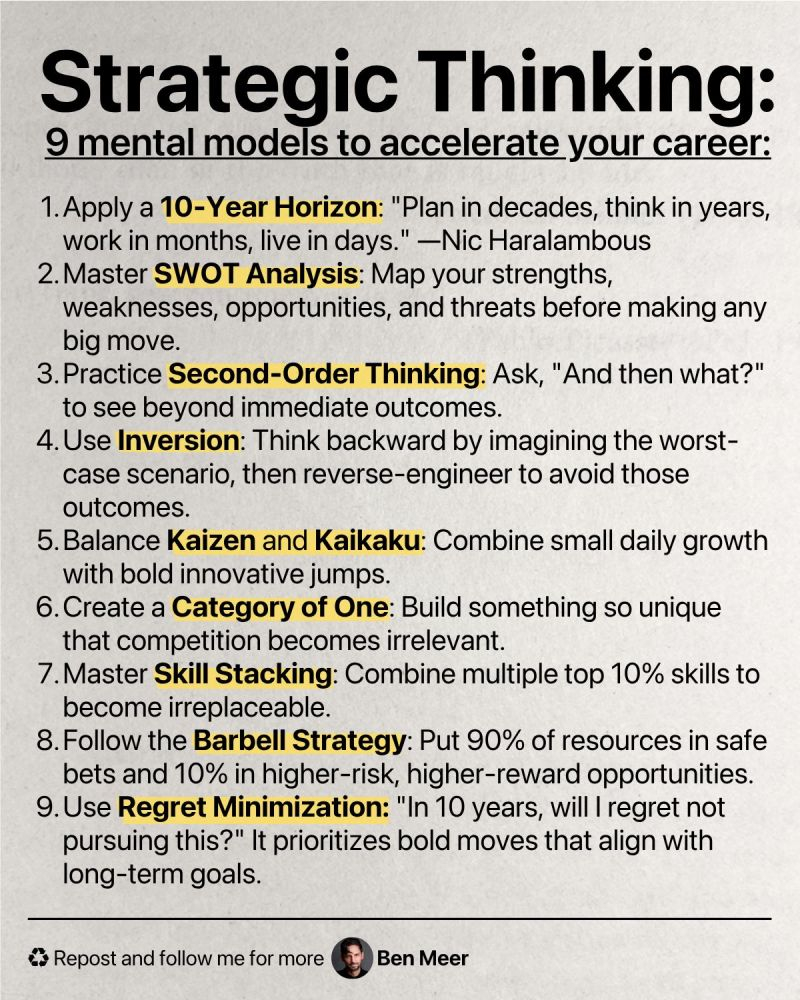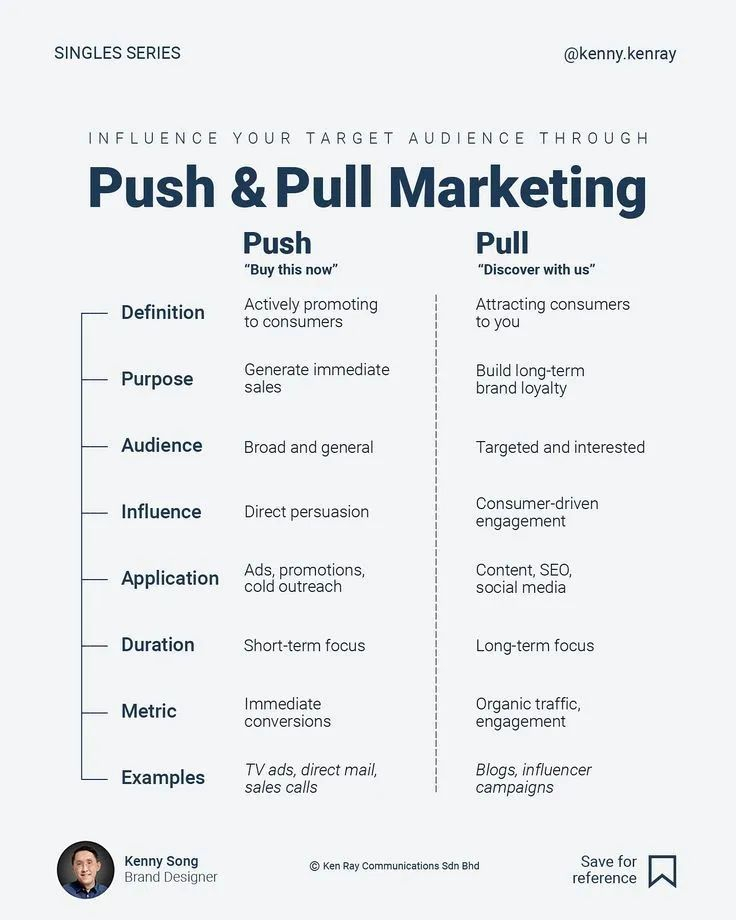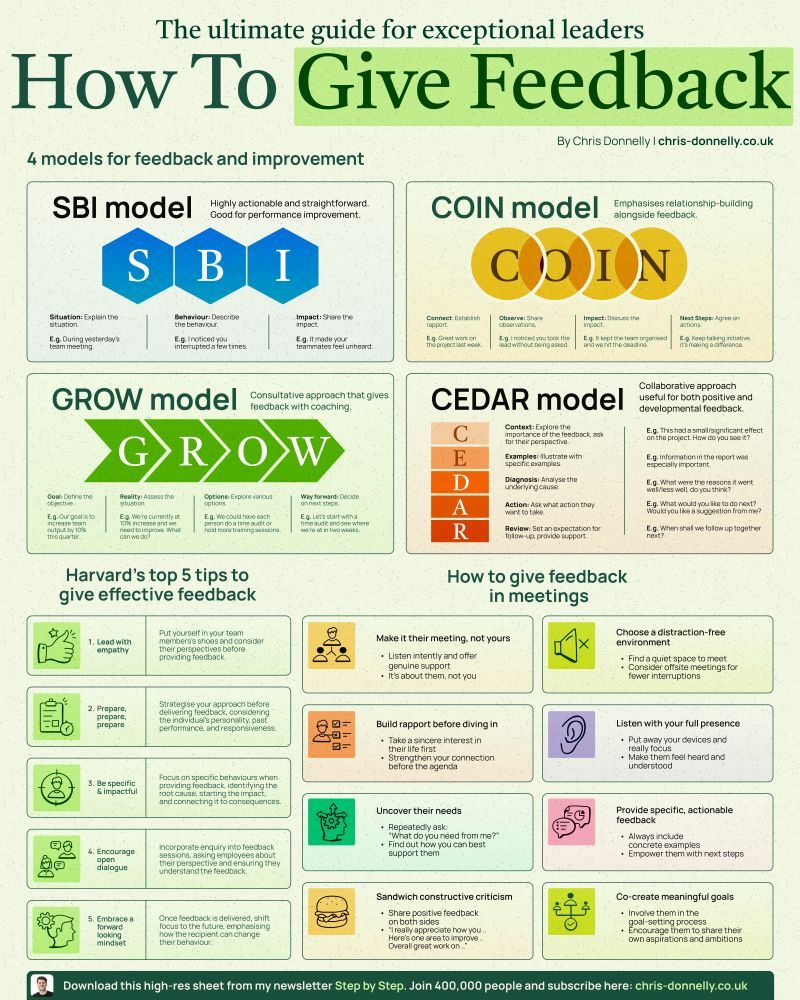Businesses don't fail because of bad ideas.
They fail because of bad strategy.
The founders and CEOs who build successful businesses,
Aren't necessarily smarter or better educated...
They just have a clear strategy and plan of attack.
In other words: they know where they’re going,
And what to do if/when their plan breaks down.
Strategy is an overarching system that helps you and your team:
Maintain a clear purpose and mission.
Remain flexible under pressure.
Stay focused on priorities.
And it evolves as the business grows.
That's why I love this visualisation by Wendy McGuinness.
It's the simplest and most effective framework,
To keep your vision and your team aligned toward your long-term goals:
Purpose
↳ This is your why.
↳ It’s what drives the business.
Strategy
↳ This is your how.
↳ It keeps you focused, not scattered.
Execution
↳ This is your action.
↳ It translates ideas into results.
If you have a defined goal and space to adapt,
You're already ahead of 99% of the competition.
Because a really great strategy is basically a compass:
It keeps you on course, even when you make a detour (or get completely lost).
If you want to build a business with real direction,
My newsletter Step By Step will help guide you.
Every Sunday, I share:
- Strategy breakdowns like this
- Lessons from growing 8 & 9-figure companies
- Tools to align your vision with your actions
They fail because of bad strategy.
The founders and CEOs who build successful businesses,
Aren't necessarily smarter or better educated...
They just have a clear strategy and plan of attack.
In other words: they know where they’re going,
And what to do if/when their plan breaks down.
Strategy is an overarching system that helps you and your team:
Maintain a clear purpose and mission.
Remain flexible under pressure.
Stay focused on priorities.
And it evolves as the business grows.
That's why I love this visualisation by Wendy McGuinness.
It's the simplest and most effective framework,
To keep your vision and your team aligned toward your long-term goals:
Purpose
↳ This is your why.
↳ It’s what drives the business.
Strategy
↳ This is your how.
↳ It keeps you focused, not scattered.
Execution
↳ This is your action.
↳ It translates ideas into results.
If you have a defined goal and space to adapt,
You're already ahead of 99% of the competition.
Because a really great strategy is basically a compass:
It keeps you on course, even when you make a detour (or get completely lost).
If you want to build a business with real direction,
My newsletter Step By Step will help guide you.
Every Sunday, I share:
- Strategy breakdowns like this
- Lessons from growing 8 & 9-figure companies
- Tools to align your vision with your actions
Businesses don't fail because of bad ideas.
They fail because of bad strategy.
The founders and CEOs who build successful businesses,
Aren't necessarily smarter or better educated...
They just have a clear strategy and plan of attack.
In other words: they know where they’re going,
And what to do if/when their plan breaks down.
Strategy is an overarching system that helps you and your team:
✅ Maintain a clear purpose and mission.
✅ Remain flexible under pressure.
✅ Stay focused on priorities.
And it evolves as the business grows.
That's why I love this visualisation by Wendy McGuinness.
It's the simplest and most effective framework,
To keep your vision and your team aligned toward your long-term goals:
🧭 Purpose
↳ This is your why.
↳ It’s what drives the business.
📑 Strategy
↳ This is your how.
↳ It keeps you focused, not scattered.
⚙️ Execution
↳ This is your action.
↳ It translates ideas into results.
If you have a defined goal and space to adapt,
You're already ahead of 99% of the competition.
Because a really great strategy is basically a compass:
It keeps you on course, even when you make a detour (or get completely lost).
If you want to build a business with real direction,
My newsletter Step By Step will help guide you.
Every Sunday, I share:
- Strategy breakdowns like this
- Lessons from growing 8 & 9-figure companies
- Tools to align your vision with your actions
0 Comments
0 Shares
391 Views
0 Reviews



